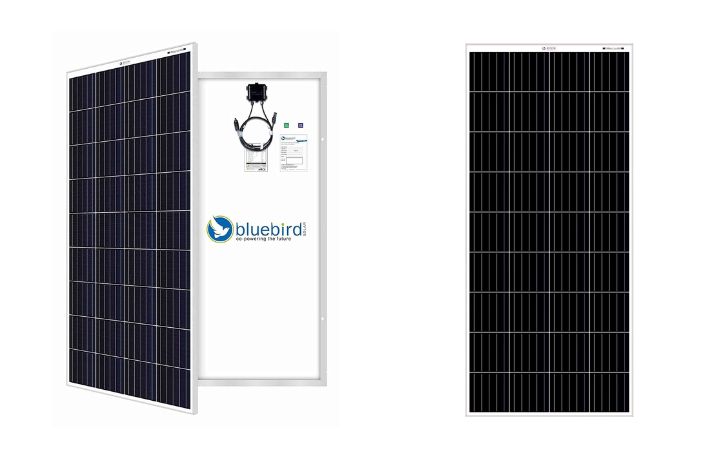200 Watt Solar Panels: Understanding Their Operation, Applications, and Variants

Solar power is like having your own pocket-sized sunshine generator. It’s clean, renewable, and can save you money on your energy bills. One of the key players in the solar power game is the 200 watt solar panel. But how does it work? And why might you want one? Let’s break it down.
How Does a 200 Watt Solar Panel Work?
At the heart of a 200 watt solar panel lies silicon solar cells, which harness sunlight and convert it into electricity. This conversion is essential since most devices operate on AC power. In the ever-evolving landscape of renewable energy, solar power stands tall as one of the most promising solutions to combat climate change and meet our growing energy needs sustainably.
What Can You Use It For?
You can use a 200 watt solar panel to power all sorts of things, from charging your phone or laptop to running lights or even small appliances in your home or RV. They’re great for camping trips, powering outdoor lights, or even providing backup power during emergencies.
Understanding Solar Panels:
Solar panels are comprised of photovoltaic (PV) cells, which are the building blocks responsible for converting sunlight into electricity through the photovoltaic effect. Each PV cell consists of semiconductor materials, typically silicon, that generate electric current when exposed to sunlight.
The Anatomy of a 200-Watt Solar Panel:
A 200-watt solar panel is essentially a collection of numerous PV cells electrically interconnected and encapsulated within a protective material, usually tempered glass and polymer layers. The arrangement and wiring of these cells determine the panel’s power output, measured in watts.
The Working Principle:
- Absorption of Sunlight: When sunlight hits the surface of the solar panel, it penetrates the protective layers and reaches the PV cells.
- Generation of Electricity: Upon absorbing sunlight, the semiconductor material in the PV cells releases electrons, initiating the flow of electric current.
- Direct Current (DC) Conversion: The generated electricity is in the form of direct current (DC). This DC electricity flows through the wiring embedded within the solar panel towards the junction box, where it is collected.
- Junction Box and Wiring: The junction box acts as a central hub where the electrical connections from individual PV cells converge. From here, the DC electricity is transferred out of the solar panel through wires for further processing.
- Inverter Conversion: Since most household appliances and the electricity grid operate on alternating current (AC), the DC electricity produced by the solar panel must be converted into AC. This conversion is accomplished by an inverter, which is typically installed either within the solar panel system or externally.
- Integration with the Electrical System: The AC electricity generated by the inverter can now be used to power electrical devices within a home or business. Any excess electricity can be fed back into the grid, allowing for net metering or stored in batteries for later use.
Types of 200 Watt Solar Panels
- Mono PERC: Renowned for their efficiency, monocrystalline solar panel boast an energy output of 19% to 20%. Their single-cell structure allows them to perform exceptionally well even in limited space, making them ideal for residential rooftops.
- Polycrystalline: While slightly less efficient than their monocrystalline counterparts, polycrystalline panels offer a more budget-friendly option.
- Bifacial: The epitome of innovation, bifacial solar panels harness sunlight from both sides, significantly enhancing their energy efficiency, which can reach up to 22%.
Specifications of a 200 Watt Solar Panel
Regardless of type, 200 watt solar panels typically come with warranties covering manufacturing defects and output performance. These warranties, ranging from 2 to 10 years, provide assurance against premature failure and performance degradation.
Benefits of 200 Watt Solar Panels
- Compact Size: Ideal for both residential rooftops and recreational vehicles.
- Lightweight: Easy to transport and install.
- Cost Savings: By harnessing solar energy, these panels help reduce electricity bills.
- Versatility: Suitable for charging a variety of small appliances, from mobile phones to mini projectors.
Cons of 200 Watt Solar Panels
- Limited Capacity: Not suitable for powering large appliances; multiple panels may be required.
- Space Requirements: Installing multiple panels may pose space constraints, especially in urban settings.
Conclusion
In conclusion, 200 watt solar panels offer an enticing blend of affordability, efficiency, and versatility. Whether you’re looking to power your home or enhance your outdoor adventures, these panels provide a reliable source of clean energy. By understanding their workings, types, pricing, specifications, and pros and cons, you can confidently embark on your solar journey, knowing you’ve made a sustainable and informed choice.











